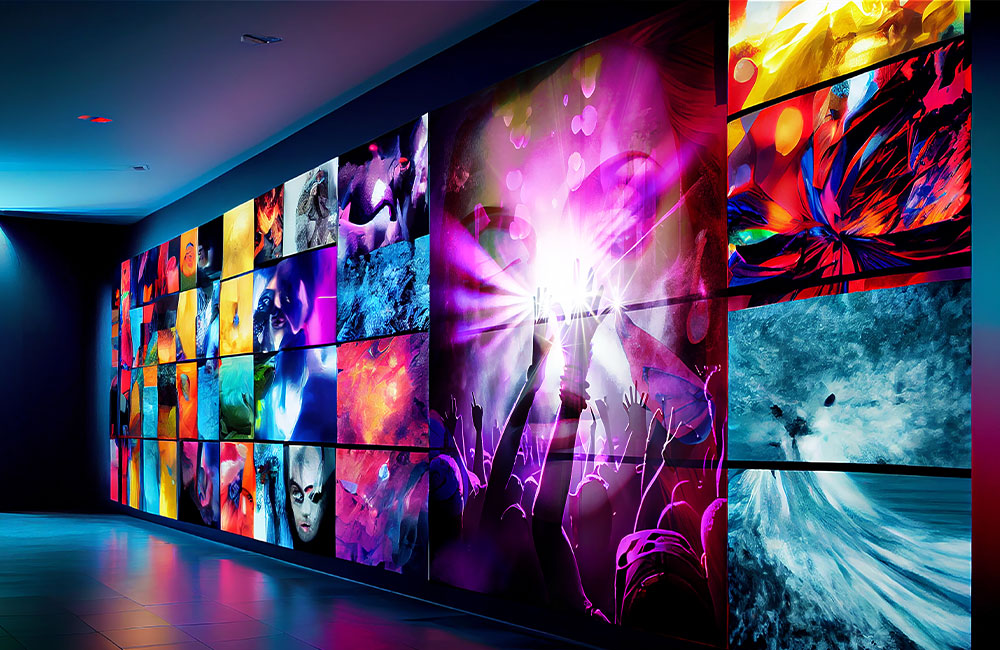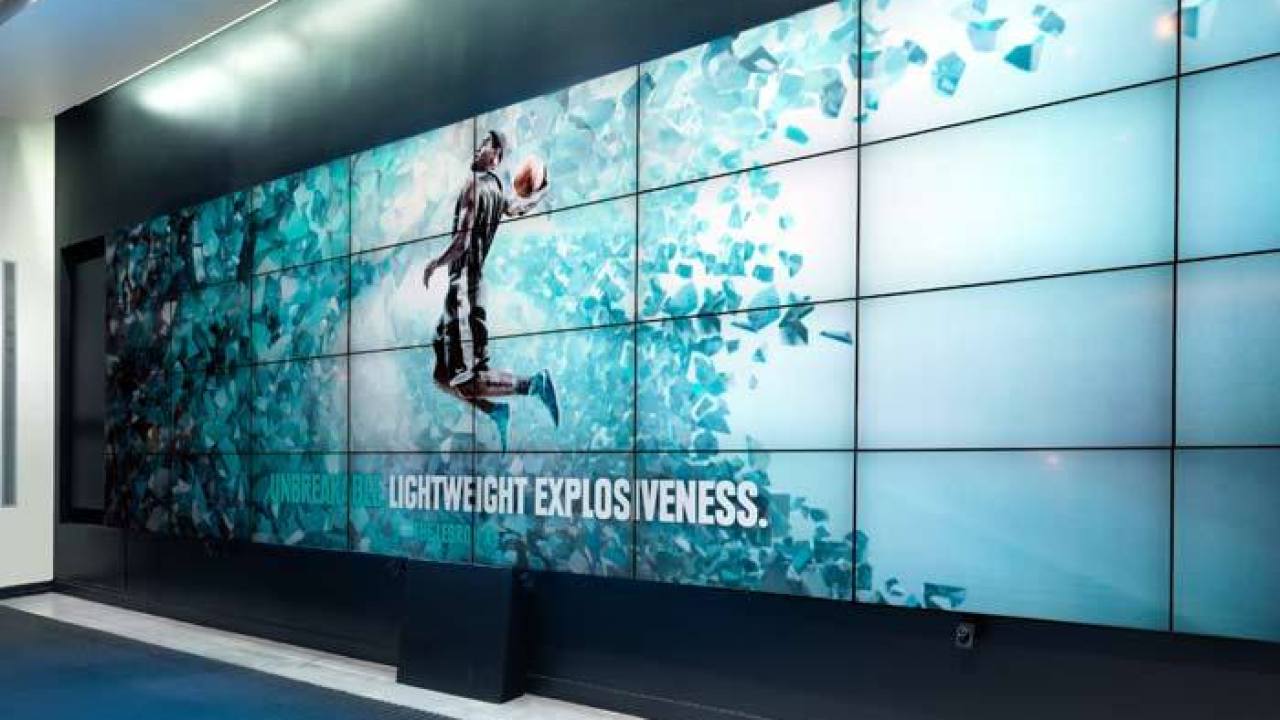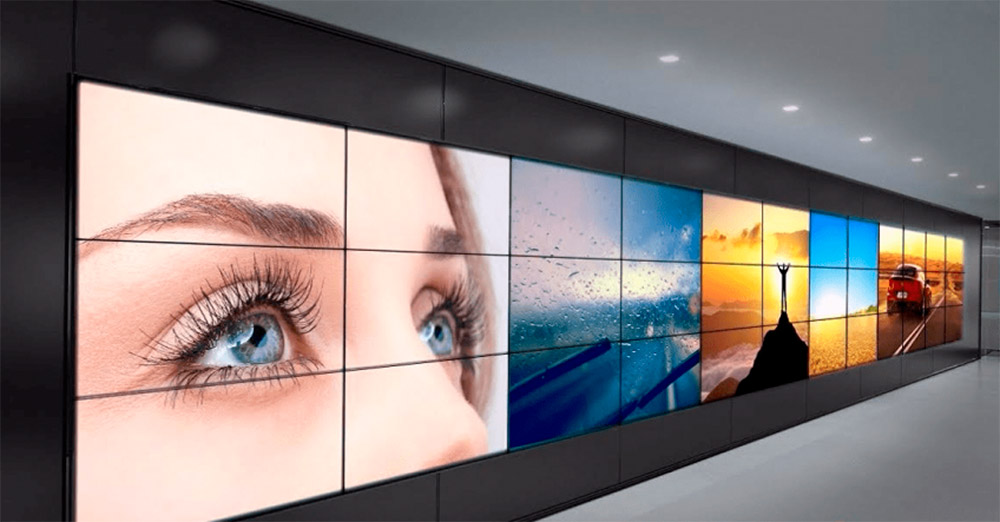
How Video Walls Work
A video wall comprises aligned displays that seamlessly showcase continuous content. To operate, it relies on specialized hardware setups and accompanying software for content planning and configuration.
Benefits of Video Walls
1. Grabs Attention: Due to their size, video walls naturally draw attention, making them ideal for branding or informational campaigns.
2. Time Saving for Employees: By displaying crucial information, video walls can free up employee time, catering to tasks like providing directions in malls, stadiums, or hospitals.
3. Simultaneous Display of Various Content: Powered by content management software, video walls can showcase diverse content simultaneously, from maps to news and social media updates.
4. Versatility Across Industries: Once a luxury mainly in retail, video walls are now affordable and widely used across industries like corporate offices, schools, and hospitals.
5. Flexible Installation: LED video walls offer design flexibility, accommodating unconventional shapes and installations.
6. Customizable Content: Content management software enables businesses to personalize and schedule content updates, enhancing relevance and engagement.
7. Sales Boosting Potential: Digital signage, including video displays, can significantly increase sales by promoting discounts and deals to target customers.
8. Enhanced Customer Experience: Utilizing video walls for information display, such as estimated wait times, can improve customer satisfaction and service efficiency.
9. Consumer Preference: Studies show consumers are more inclined to shop in stores with video displays, attributing to improved product information and ambiance.
Components of a Video Wall System
While displays are prominent, other components like hardware (e.g., screens and media players), software (content management systems), and content creation play vital roles in a video wall setup.

Designing Content for Video Walls
1. High-Quality Visuals: Utilize realistic, high-quality images and videos to captivate viewers effectively.
2. Concise Text: Keep text short and legible, with a maximum of five words per line, ensuring clarity and readability.
3. Optimal Screen Brightness: Adjust screen brightness according to ambient light to maintain content visibility.
4. Avoid Clutter: Maintain adequate white space to facilitate easy content consumption and avoid clutter.
5. Regular Content Testing: Periodically test content to ensure effectiveness and make necessary adjustments to enhance return on investment (ROI).
By adhering to these principles, businesses can effectively leverage video walls to engage audiences and achieve their communication and marketing objectives.




